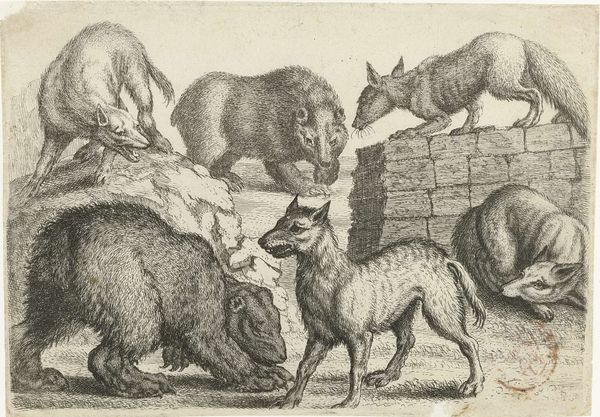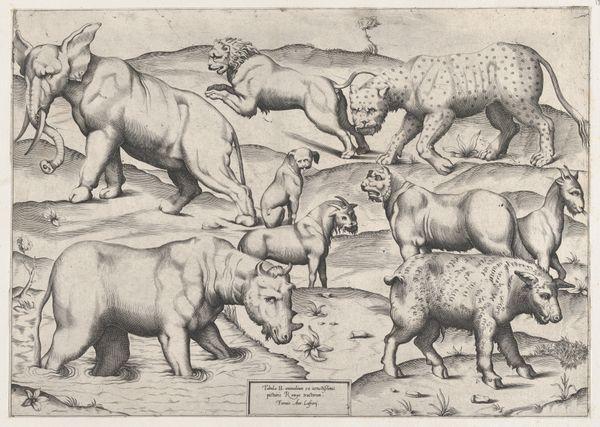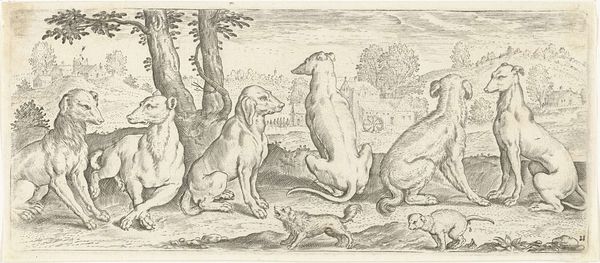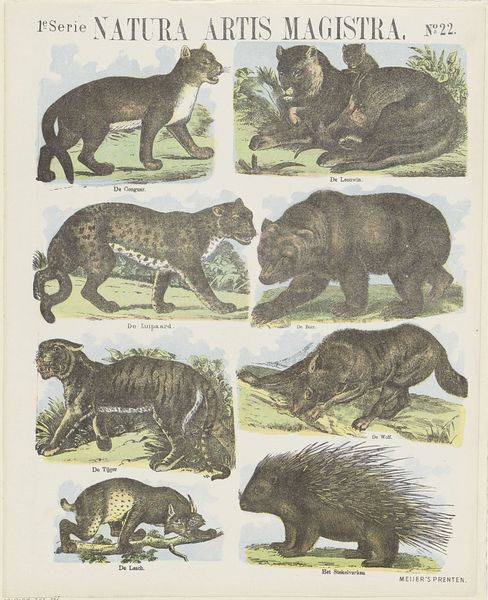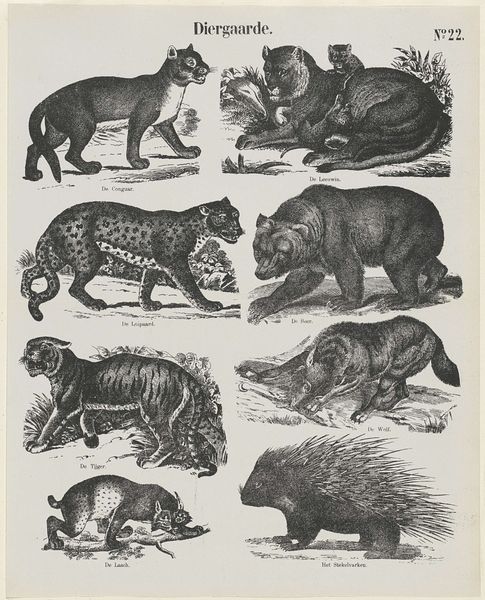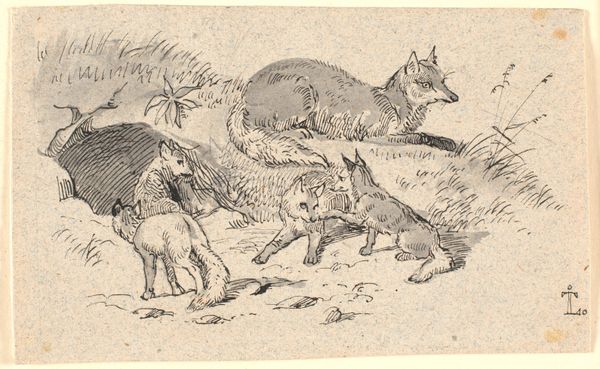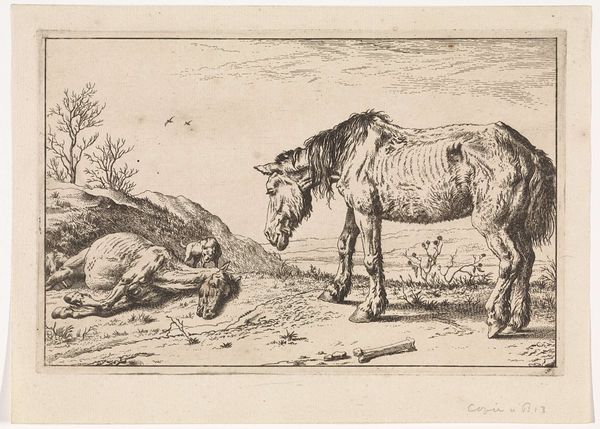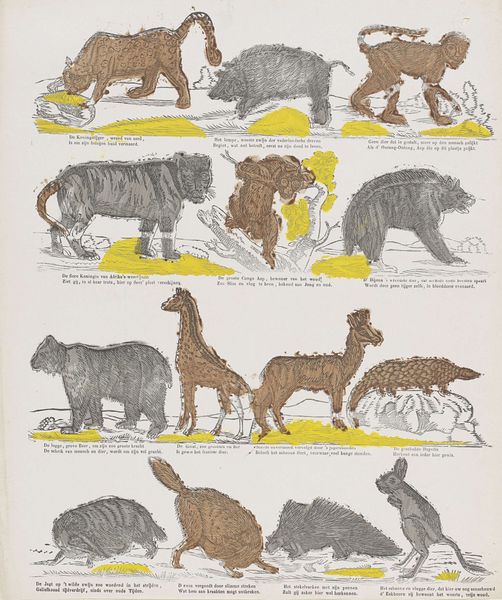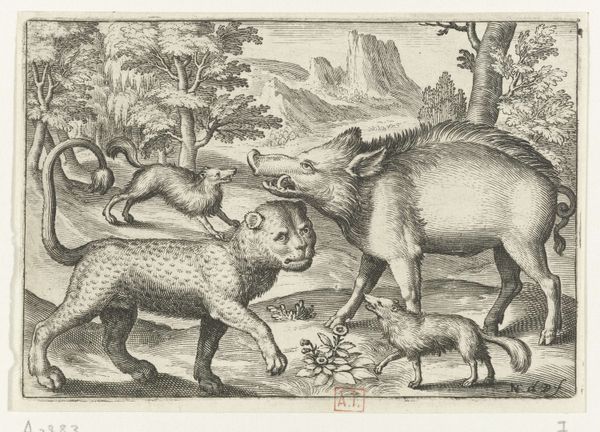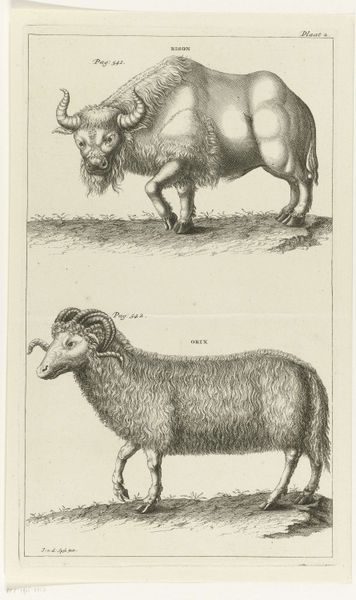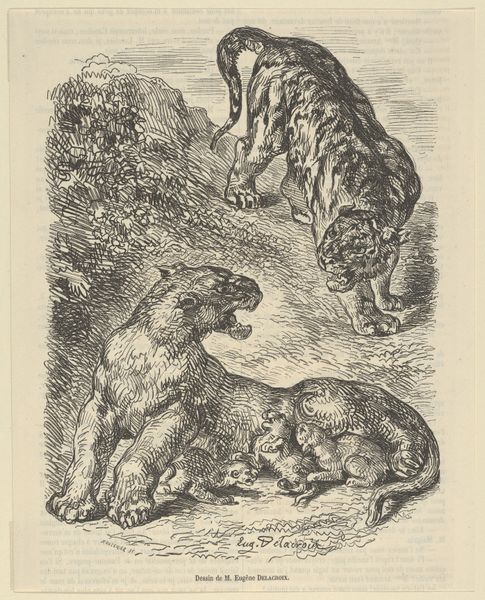
print, engraving
#
baroque
# print
#
personal sketchbook
#
pen work
#
sketchbook drawing
#
sketchbook art
#
engraving
#
realism
Dimensions: height 274 mm, width 167 mm
Copyright: Rijks Museum: Open Domain
Curator: Let’s take a closer look at "Dieren in Zuid-Afrika," an engraving by Abraham Zeeman dating back to 1727. Editor: It has a feel of early scientific illustration, slightly fantastical. The animals are neatly arranged as if in an inventory, yet the details strike me as almost dreamlike, not quite real. Curator: Indeed. These animal depictions are rooted in the Dutch encounter with South Africa. Zeeman, though he might not have seen all these creatures himself, compiled them likely from reports, sketches and accounts from voyagers of the Dutch East India Company. Consider the hippo, or 'Zee-koe', at the top – rendered with meticulous detail, showcasing an early European understanding of the animal. Editor: I notice the odd proportions, especially in the 'Tyger'. They're labeled so straightforwardly, but there's this sense of cultural interpretation layered upon reality. What power did these images hold for those who viewed them? Curator: That’s crucial to consider. These images were tools of knowledge, reinforcing a sense of colonial understanding and dominance over the natural world. The seemingly objective record of "realism" presented actually served to categorize and control new environments through representation. Editor: It reminds us of the act of looking and documenting. The "realism" becomes almost ironic, given the biases inherent in who gets to name and record what they see, how it then impacts those represented. The turtle – ‘Schildpad’ - rendered more accurately is not just a matter of simple identification, but of cultural contact and ensuing hierarchy. Curator: Precisely. The act of rendering becomes an assertion. So, viewing this work through the lens of the history of Dutch colonialism prompts necessary questions around power. Editor: And also invites us to be more cautious, reflective observers when we look at supposedly straightforward depictions of "nature." Curator: A great takeaway – thanks for illuminating that, a complex history etched in simple lines. Editor: An important thing to always keep in mind.
Comments
No comments
Be the first to comment and join the conversation on the ultimate creative platform.
